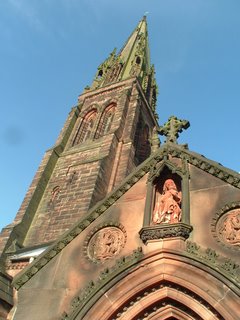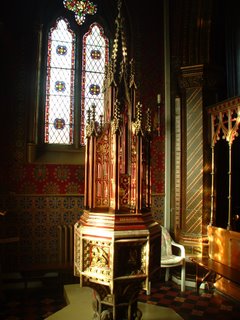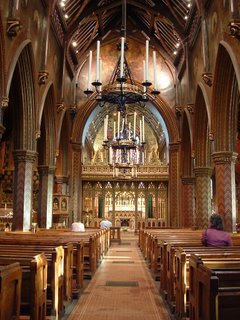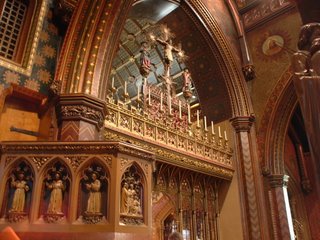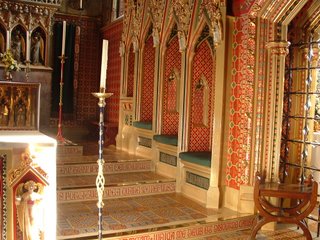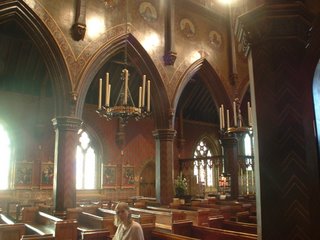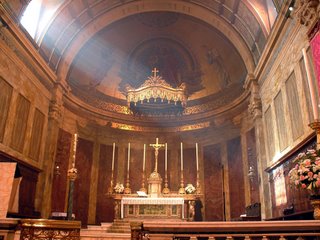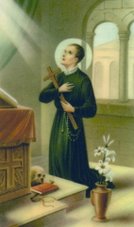
I am back-dating this, being late in writing it. Albeit to say we celebrated this wonderful feast of the Kingship of our Lord Jesus Christ when we visited Cheadle. This feast was instituted by Pope Pius XI, whose encyclical Quas Primas I have already quoted from previously. His wish was to combat the heresy which was, and still is, so widespread: that Christ is "cast out of public life, despised, neglected and ignored" to such an extent that all mention of him in public and political life is shunned.
I wish I had more time to write about this wonderful feast, which embodies so much Catholic social teaching. It is not only our personal spiritual life which Christ must reign over, but our very society and governments. As Pope Pius XI puts it, quoting Pope Leo XIII:
"His empire includes not only Catholic nations, not only baptized persons who, though of right belonging to the Church, have been led astray by error, or have been cut off from her by schism, but also all those who are outside the Christian faith; so that truly the whole of mankind is subject to the power of Jesus Christ."
Pope Pius XI reflects on the disaster that has resulted from a failure to observe Christ's kingship:
The rebellion of individuals and states against the authority of Christ has produced deplorable consequences. We lamented these in the Encyclical Ubi arcano; we lament them today: the seeds of discord sown far and wide; those bitter enmities and rivalries between nations, which still hinder so much the cause of peace; that insatiable greed which is so often hidden under a pretense of public spirit and patriotism, and gives rise to so many private quarrels; a blind and immoderate selfishness, making men seek nothing but their own comfort and advantage, and measure everything by these; no peace in the home, because men have forgotten or neglect their duty; the unity and stability of the family undermined; society in a word, shaken to its foundations and on the way to ruin.
Unfortunately I fear, this idea of Christ's supreme kingship has diminished even within Christianity. The seperation of Church and State is guarded as an essential aid to democracy, with so-called 'catholic' polititians fearful, by and large, to let their faith guide their policies.
Many Catholics will notice that they did not celebrate this feast on the Sunday before All Saints, a time to "extol the glory of him who triumphs in all the Saints and in all the Elect" but rather now observe it at the very end of the liturgical year, the last Sunday before Advent. This emphasises Pope Pius XI's word that we set "the crowning glory upon the mysteries of the life of Christ already commemorated during the year" but sadly neglects the former relation with All Saints. It is also speculated that this movement reflects the more acceptable notion that Christ will only rule as King at the end of all time, which is sadly reflected in the type of petitions in the new lectionary.
The collect for this feast (in the Rite of St. Pius V) is as follows:
Almighty and eternal God, who hast willed to restore all things in Thy beloved Son, the King of the whole creation; mercifully grant that all the peoples of the human family that have been disunited by the wound of sin may become subject to this most sweet dominion. Through Christ Our Lord. Amen.








